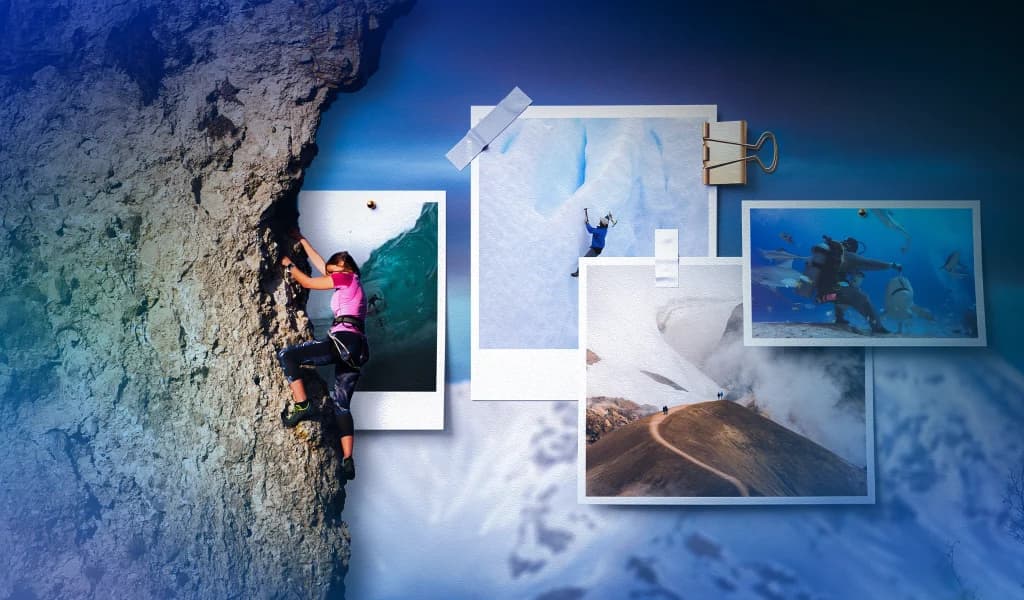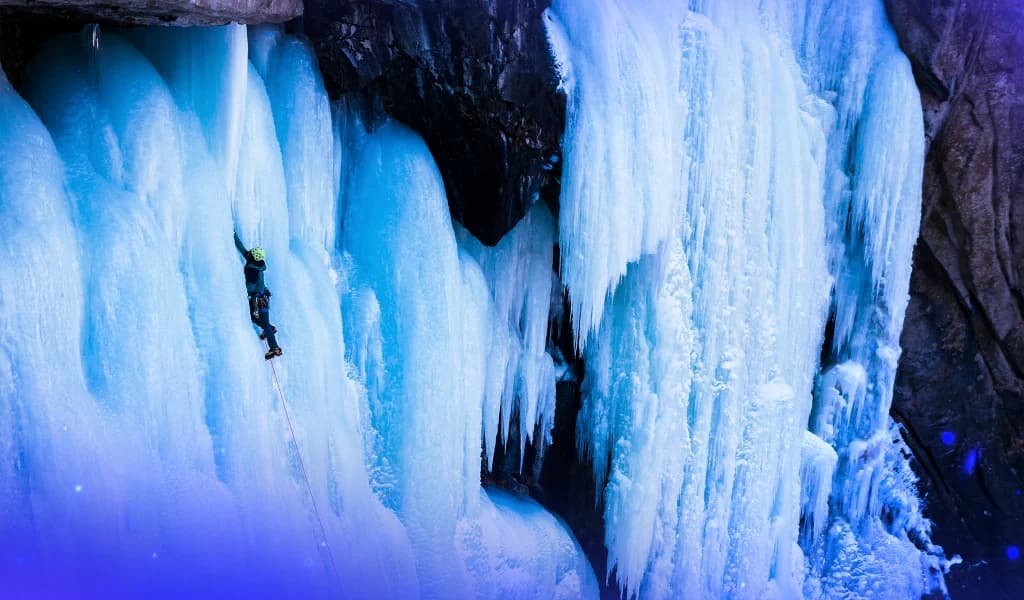
From catching a 40-foot wave to scaling ice walls or facing apex predators, thrill seekers stop at nothing for their adrenaline fix. But for many adrenaline junkies, their thrill of choice depends on where they live.
That’s because, while many extreme sports are beloved around the world, some are a product of their environment. For example, certain activities require a specific climate, are more popular in particular cultures, or relate to traditional practices.
With the help of this guide, you’ll discover how adventurists across the globe live on the edge. Plus, you’ll learn the top spots to visit if you want a taste of these thrills yourself.
Surfing
Few things in the world are as dangerous as the ocean. Its terrifying depths, its overwhelming power, and its complete unpredictability make it one of the riskiest arenas for extreme sports. However, this doesn’t stop athletes like surfers from braving its elements every day.
A delicate balance of nerve, skill, and timing, surfing is both sport and science, requiring specific conditions like sizable swells and offshore winds.
Because surfing is so condition-dependent, location is everything. Some of the best surfing spots in the world can be found in the United States and Australia. In America, California and Hawaii are the top surfing states, home to iconic point breaks in regions like Malibu, Mavericks, and Oahu.
As a beloved national pastime, it’s no shock that surfing is popular across Australia, with some of the top destinations including the Gold Coast, Byron Bay, and Bells Beach.
Bridge Climbing
While admittedly slower paced, bridge climbing is still an adventure activity of choice for many thrill seekers. As the name suggests, bridge climbing involves ascending the exterior frame of a bridge, typically until you reach the peak and experience 360° views. Depending on the incline of the ascent and the height of the summit, bridge climbing can rival any extreme sport in adrenaline.
Bridge climbing is particularly popular in the Southern Hemisphere, namely in Australia and New Zealand. In Australia, the most notable bridge climb experience takes place atop the Sydney Harbour Bridge. Led by experienced guides, you climb over 1,300 steps to reach the top of the bridge, a whopping 440 feet above sea level. From the top, you soak up panoramic views of the Sydney Opera House and Circular Quay, as well as passing traffic on Bradfield Highway right below your feet.
Other bridge climbs in the Oceanic region include the Story Bridge in Brisbane, the Mataragarup Bridge in Perth, and the Auckland Harbour Bridge.

Volcano Hiking & Boarding
If you’re an advanced thrill seeker, traditional hiking may not be exhilarating enough for you. One of the best ways to dial up the excitement? Traversing an active volcano.
In many parts of the world, this is a go-to practice. For instance, Asia is home to some of the most majestic volcanoes to climb, including Mount Fuji in Japan and Mount Batur in Indonesia. For both nations, hiking these volcanoes is a culturally and spiritually profound experience. In their respective cultures, the summits are seen as sacred dwelling places for gods, and climbing in them is considered a process of spiritual enlightenment.
In Nicaragua, specifically on Cerro Negro, volcano hiking is made even more exciting when paired with the practice of volcano boarding. After reaching a designated height, hikers will hop on a wooden or metal board and slide down the side of the volcano. Depending on your level of comfort and athleticism, you can either stand or sit on the board, making it accessible for adrenaline junkies of all abilities.
Cliff Diving
What could be more heart-pounding than inching your way to a cliff’s edge, feeling the whipping winds on your face, and seeing the rushing rapids of the waters below? For adventure seekers, the answer is simple: jumping off.
Cliff diving originated in Hawaii in the 1700s, when King Kahekili leapt from the cliffs of Kaunolo, guided by the principles of ‘mana’ (i.e. power) and ‘pono’ (i.e. balance). Nowadays, it’s still a cherished practice on the island, with some of the most popular jumping-off points including Waimea Bay, Spitting Cave, and Laie Point.
With that said, cliff diving has proliferated, even reaching several parts of Europe. Built during WWII, the Maunsell Forts in Kent are concrete towers in the sea, originally designed as defensive platforms for British soldiers. However, these days, they’re used as launching pads for fearless divers.
Switzerland’s Ponte Brolla is another favorite among divers, largely for its gorgeous surroundings. As you leap into the chilly waters of the Maggia River, you’ll enjoy stunning views of mountainscapes, ancient rock faces, and lush greenery. With such a stunning setting, it’s no surprise the region played host to the 2025 International Cliff Diving Championship.
Shark Diving
Beneath the ocean’s surface live a diverse range of wildlife. While hundreds of thousands of species have already been identified, experts believe there are likely millions more waiting to be discovered. For some, that’s terrifying. For others, it’s exhilarating.
The likes of deep-sea scuba divers or freedivers bravely plunge to explore the depths and spot sea animals. But for certain adrenaline junkies, there’s only one creature they’re eager to see: sharks.
Whether in open water or from the safety of a cage, shark diving offers a one-of-a-kind opportunity to see these majestic predators in their natural habitat. It’s also an incredible way to better understand these oft-misrepresented animals; something for which shark conservationists like Ocean Ramsey advocate.
The Oceanic region is one of the world’s best destinations for shark cage diving. Neptune Islands, South Australia, and Bluff, New Zealand, are both known habitats for seals. As a result, they’re ideal feeding grounds for great white sharks, making your odds of a memorable sighting much greater.
Ice Climbing
While traditional rock climbing is an extreme sport in its own right, ice climbing drops the temperatures and ups the intensity.
Technical and treacherous, ice climbing involves ascending ice formations, such as glaciers or frozen waterfalls. In general, there are two main ice climbing disciplines: lead and speed. Lead climbing focuses mainly on precision and tactical ability, requiring climbers to follow a predetermined path up an ice wall. Speed climbing focuses on pace, with the goal of reaching the designated peak as quickly as possible.
If you want to brave these icy walls yourself, you’ll need to head to North America or Europe. Widely known as the ice climbing capital of the world, Ouray, Colorado, is home to stunning frozen landscapes and renowned climbing routes. With consistent conditions in winter and guided tours on offer, the Canadian Rockies, Banff and Canmore, in particular, are also ideal for ice climbing.
As the future host of the 2030 Olympic Games, it’s unsurprising that the French Alps are considered an ideal locale for winter sports, including ice climbing. The region even served as the backdrop for part of the 2025 UIAA Ice Climbing World Tour, giving athletes a rare opportunity to compete on future Olympic grounds.

For adrenaline junkies around the world, finding their thrill is as simple as looking in their own backyard. For Australians, it could be lurking in the crashing waves of their coastal town. For Americans, it could be hiding atop the icy peak of a towering glacier. For Nicaraguans, it could be waiting on the side of an active volcano.
Wherever they may be, one thing is certain: thrill seekers will always chase danger, and they’ll always find it.


